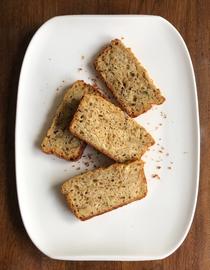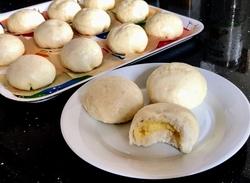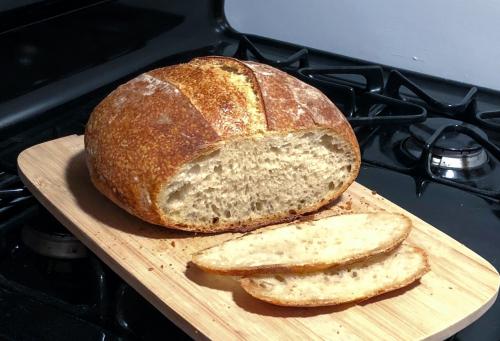Our Indoor World: Baking Bread at Home
It’s Week Eleven of Lockdown Library, and I now spend my days consuming my body weight in carbs every twenty-four hours. With restaurants closed and grocery store trips minimized, that means delving into the satisfying world of homemade bread. Baking, particularly bread baking, is traditionally a wholesome, salt-of-the-earth type of activity—think Peeta Mellark’s warmth and steadfastness, or Laura Ingalls Wilder’s simple life on the frontier. And who couldn’t use some wholesomeness in these troubling times?
I’m hardly alone in this, if the inconsistent baking supplies at my local stores are anything to go by. Grocery suppliers are doing their best, but flour and yeast can be hard to find. Luckily, there are still many places to purchase online. I ended up turning to Bakers Authority, which offers a variety of flours and yeasts, as well as other baking ingredients and tools.

The basic principles of bread hinge on combining living yeast with a mix of flour and water, then resting the dough until it’s risen and increased in volume. From there, you’ll find infinite variations: longer or shorter fermentation periods, multiple rises, different proportions of water to flour, the amount of mixing and kneading, enriching the dough with butter and other flavorings, and so on. Most recipes call for all-purpose or bread flour, but others involve alternate grains like rye, spelt, and einkorn. All these choices impact the flavor and texture of the bread, with delicious results.
If you’ve got the time (and I’m guessing you’ve got the time), you may want to try a sourdough loaf. Unlike other breads, sourdough uses wild fermentation cultivated from natural yeast found in flour and the air. Building a starter may take anywhere from a few days to a few weeks, but it’s a thing of beauty to raise a living culture from seemingly inert ingredients. There are a number of tutorials out there, but I followed King Arthur Flour’s advice on making and maintaining a starter. From there, I used a combination of Emilie Raffa’s and Claire Saffitz’s recipes, and ended up with a loaf that I had to restrain myself from finishing off the same day.
 Find yeast too fussy? Try a quick bread, which is leavened by baking powder or soda. There’s no proofing or kneading involved, which means you're only a few hours away from slicing into some classic banana bread, traditional Irish soda bread, or black pepper and parmesan beer bread. On the other hand, you might find yourself following your ambitions to filled breads such as calzones and Turkish pide, or other styles of baking, such as boiled bagels or steamed custard dim sum buns.
Find yeast too fussy? Try a quick bread, which is leavened by baking powder or soda. There’s no proofing or kneading involved, which means you're only a few hours away from slicing into some classic banana bread, traditional Irish soda bread, or black pepper and parmesan beer bread. On the other hand, you might find yourself following your ambitions to filled breads such as calzones and Turkish pide, or other styles of baking, such as boiled bagels or steamed custard dim sum buns.
You don’t need me to tell you all the ways you can enjoy the fruits of your labor: toast for breakfast, rolls for lunchtime sandwiches, sweet breads for dessert, anytime slices still warm from the oven with butter melting into the pillowy crumb. Once you’ve discovered the joy of baking, you’ll find that, like me, you’re tempted to live by bread alone.
Bread Recipes, Culture, and History
• James Beard | Beard on Bread
• Rose Levy Beranbaum | The Bread Bible
• Mark Bittman | How to Bake Everything: Simple Recipes for the Best Baking
• Nigella Lawson | How to Be a Domestic Goddess: Baking and the Art of Comfort Cooking
• Florence Lin | Florence Lin's Complete Book of Chinese Noodles, Dumplings and Breads
• Maria Balinska | The Bagel: The Surprising History of a Modest Bread
• Mimi Sheraton | The Bialy Eaters: The Story of a Bread and a Lost World
Bread Baking in Fiction
• Laura Ingalls Wilder | By the Shores of Silver Lake
• Suzanne Collins | The Hunger Games
• Robin Sloan | Sourdough
• Jodi Picoult | The Storyteller
• Kevin Panetta and Savanna Ganucheau | Bloom


Disqus Comments